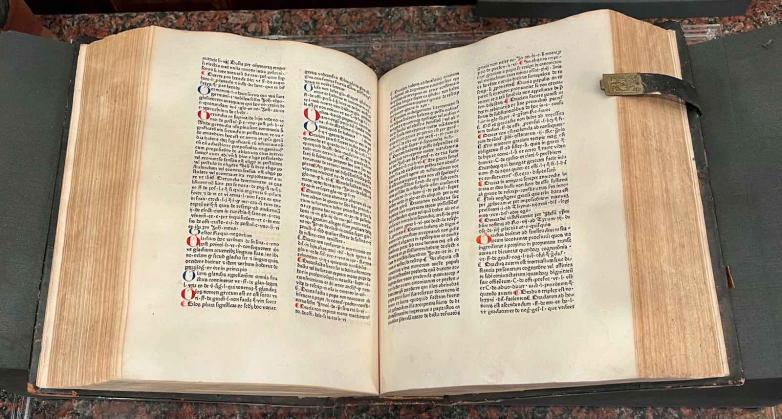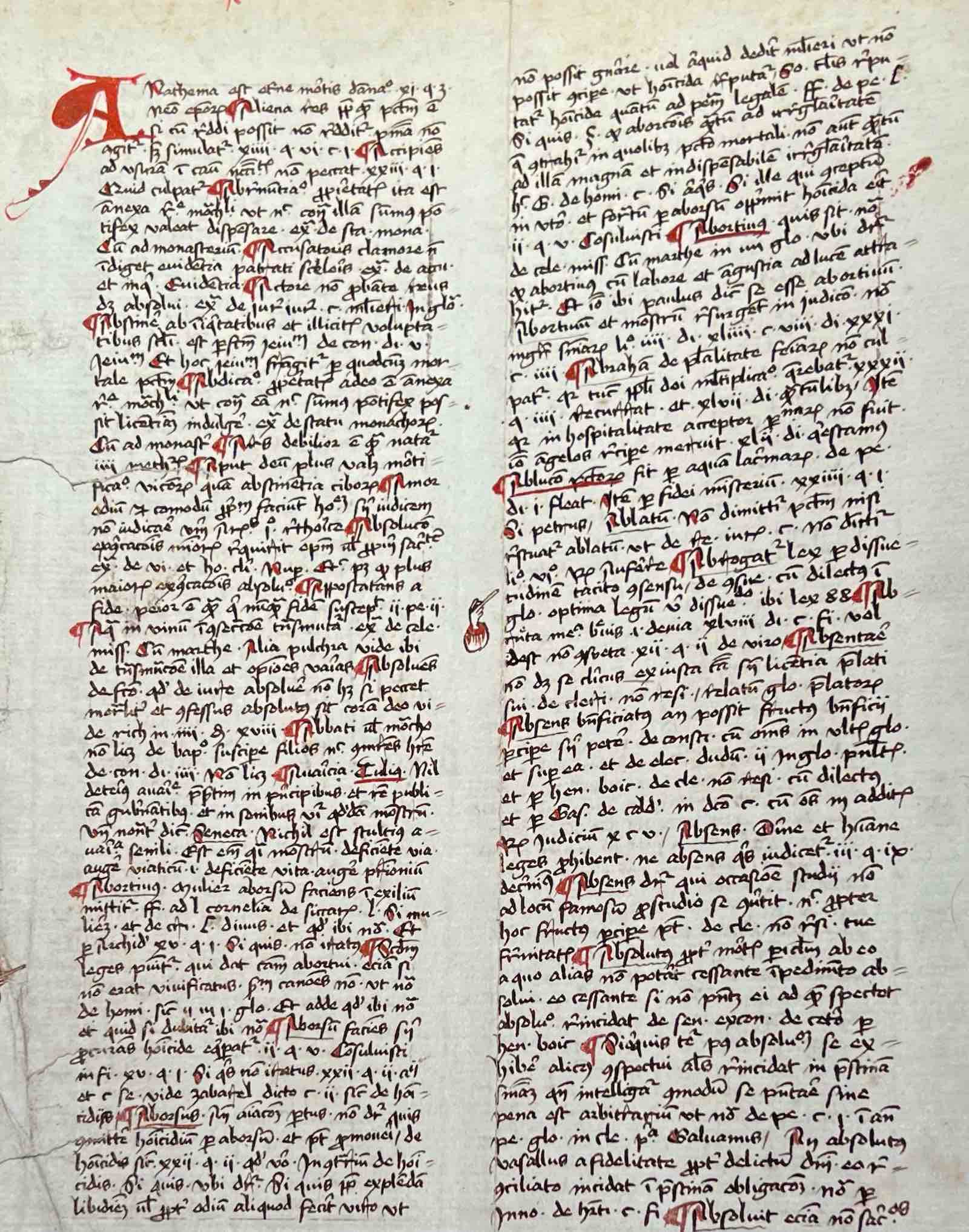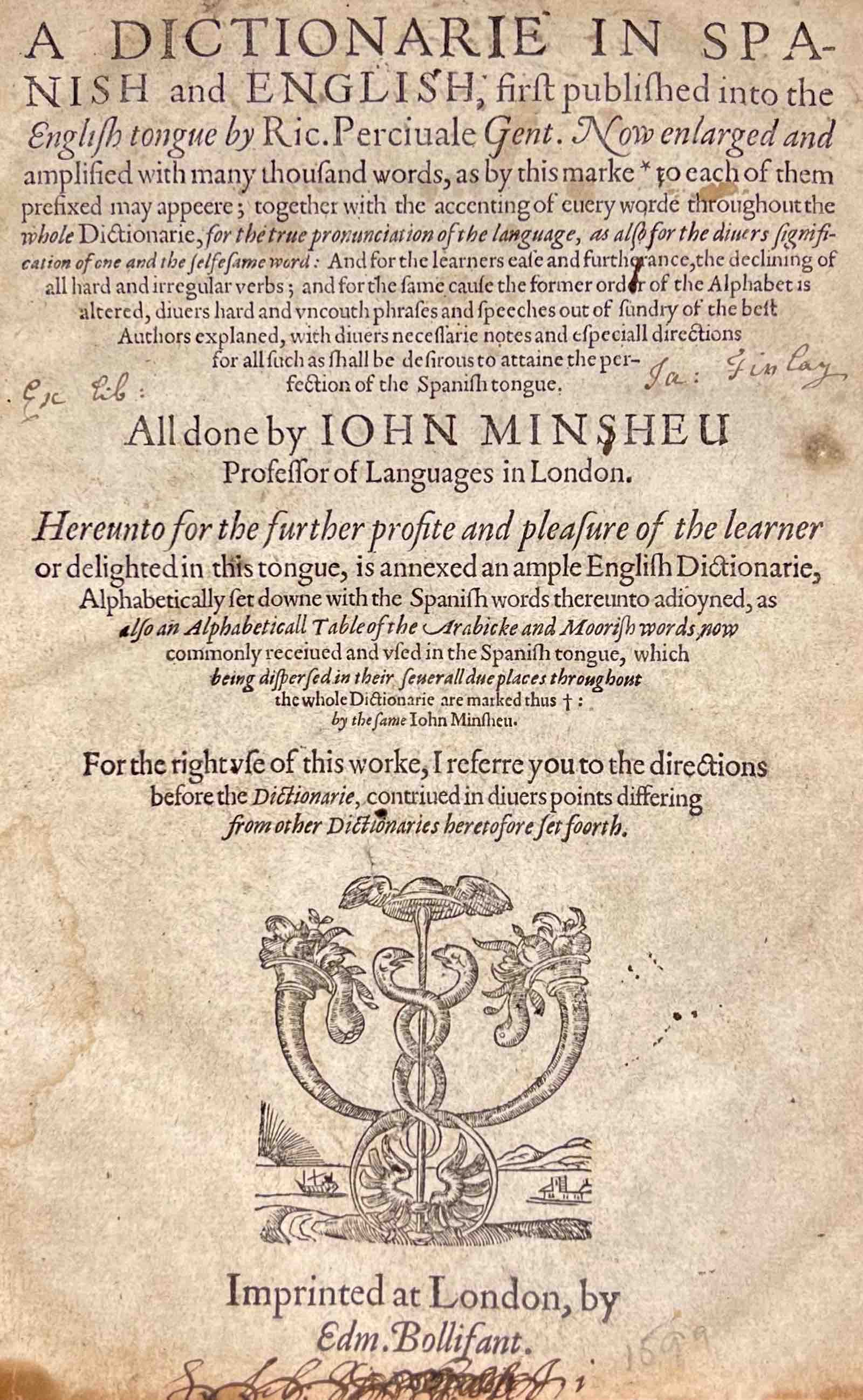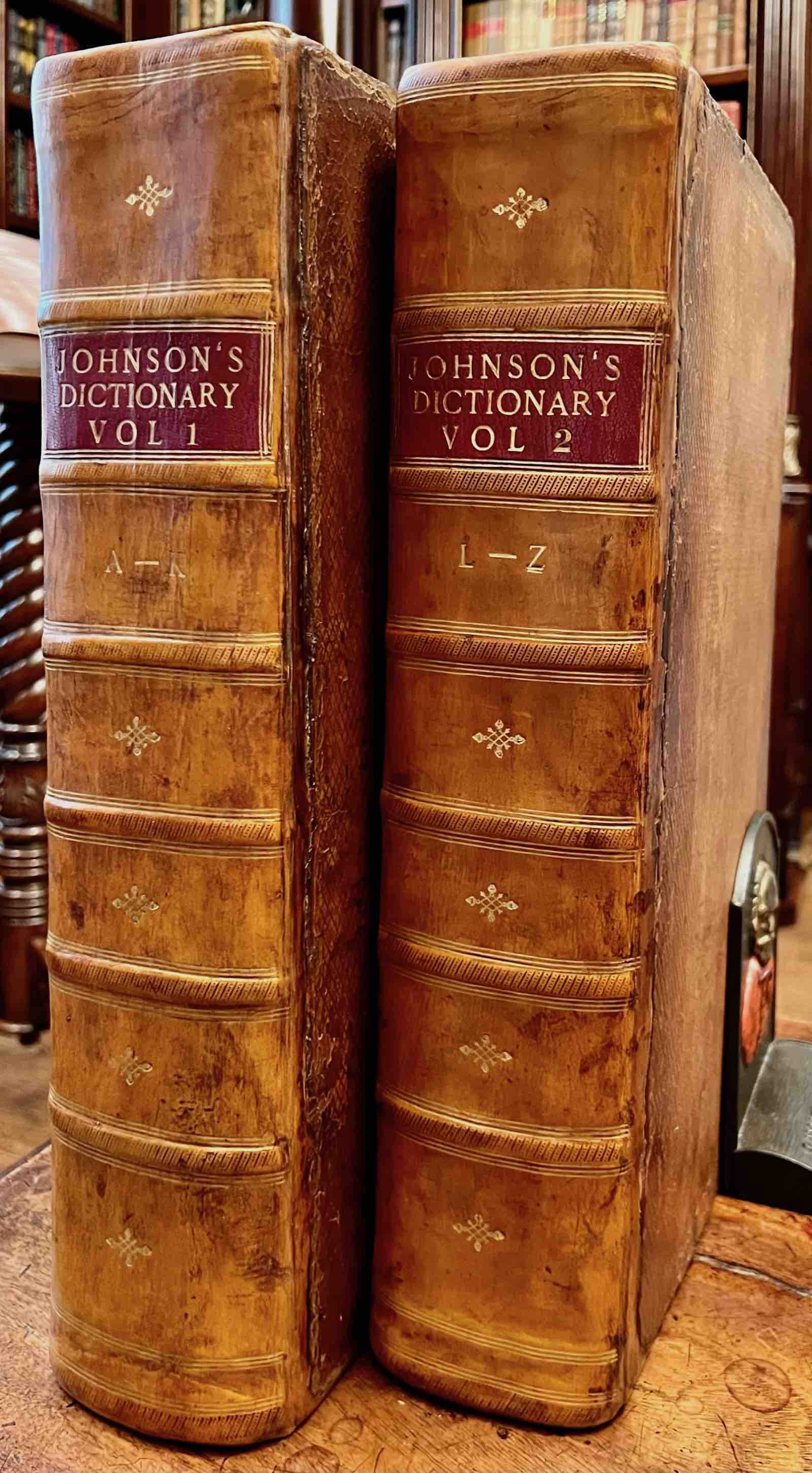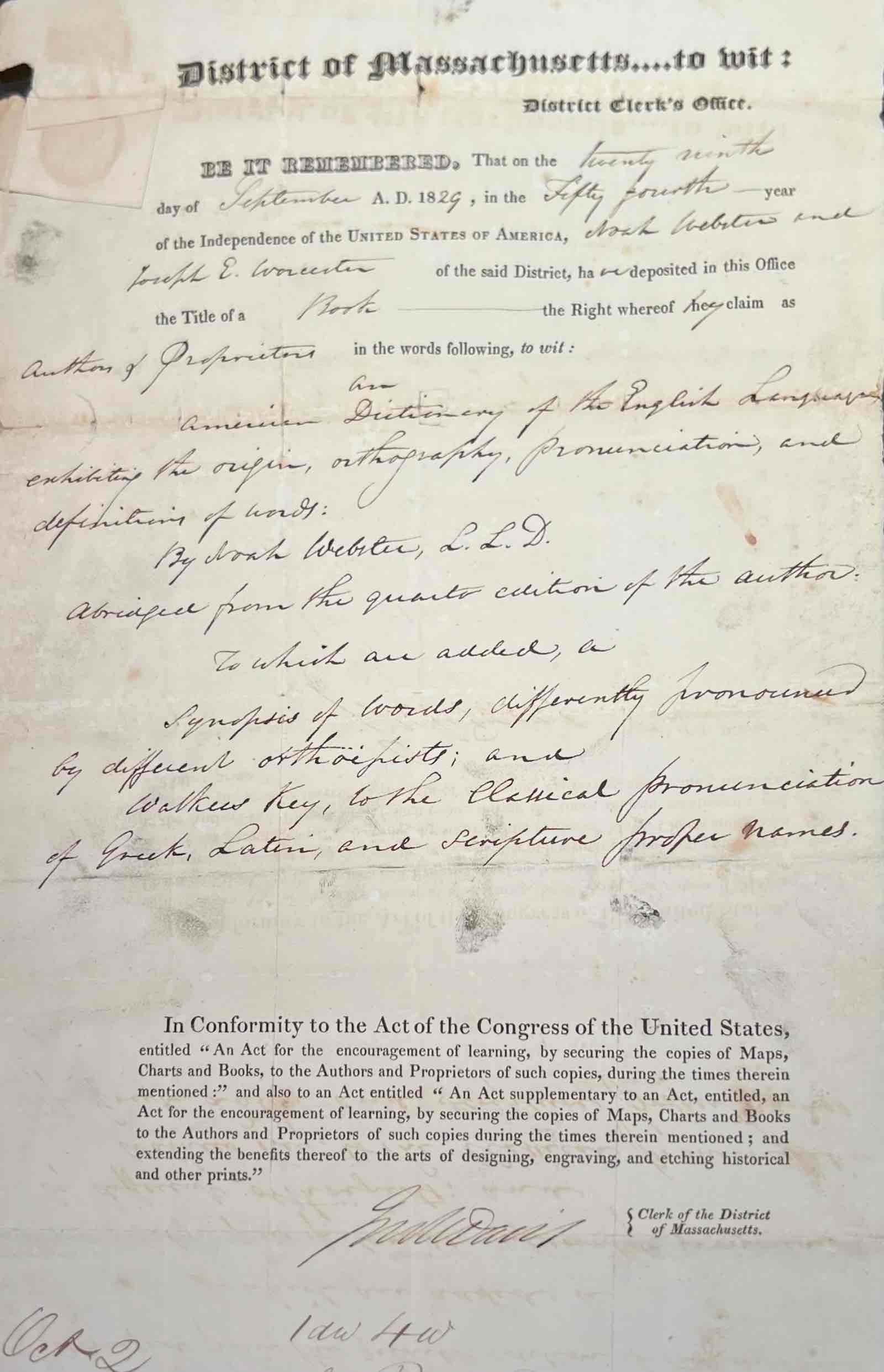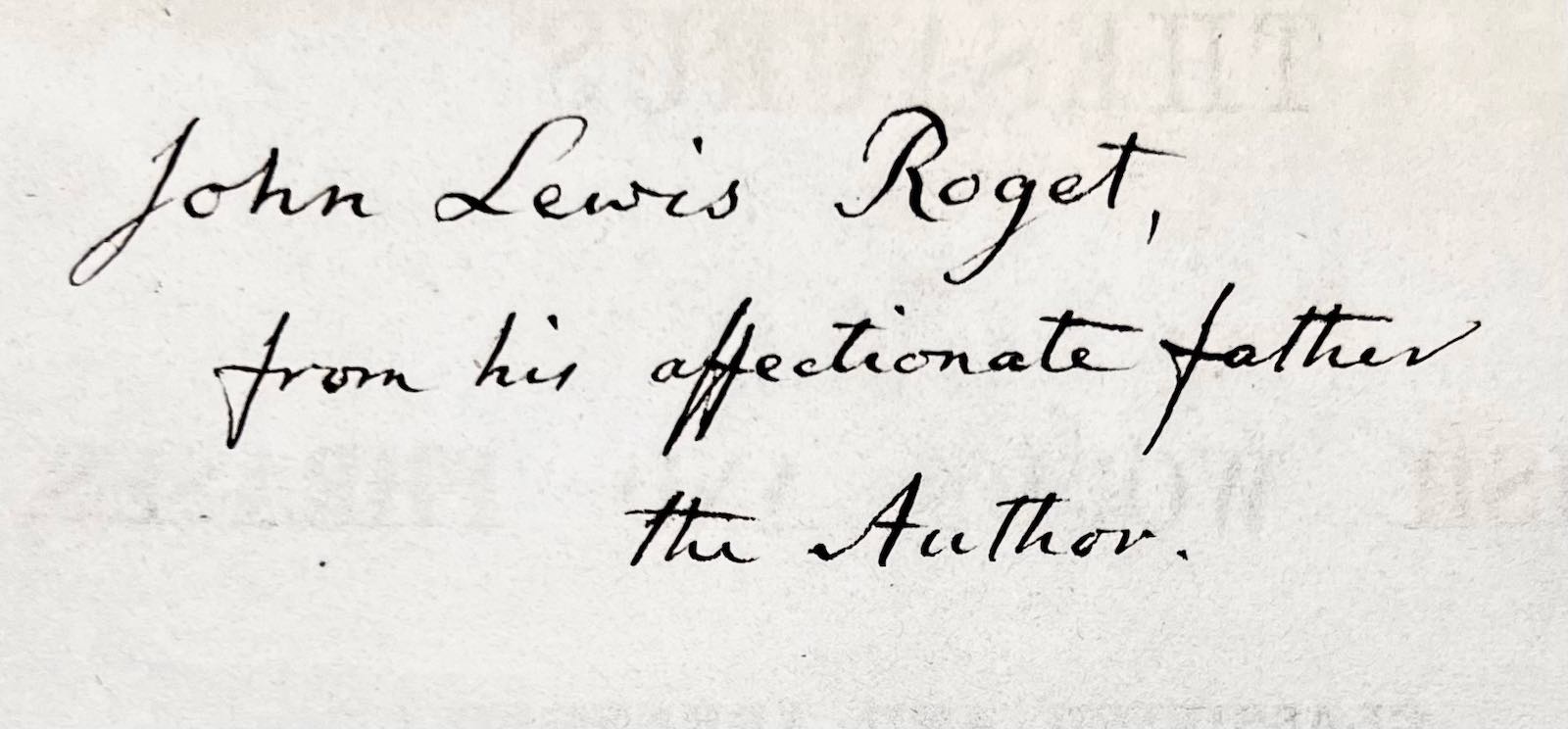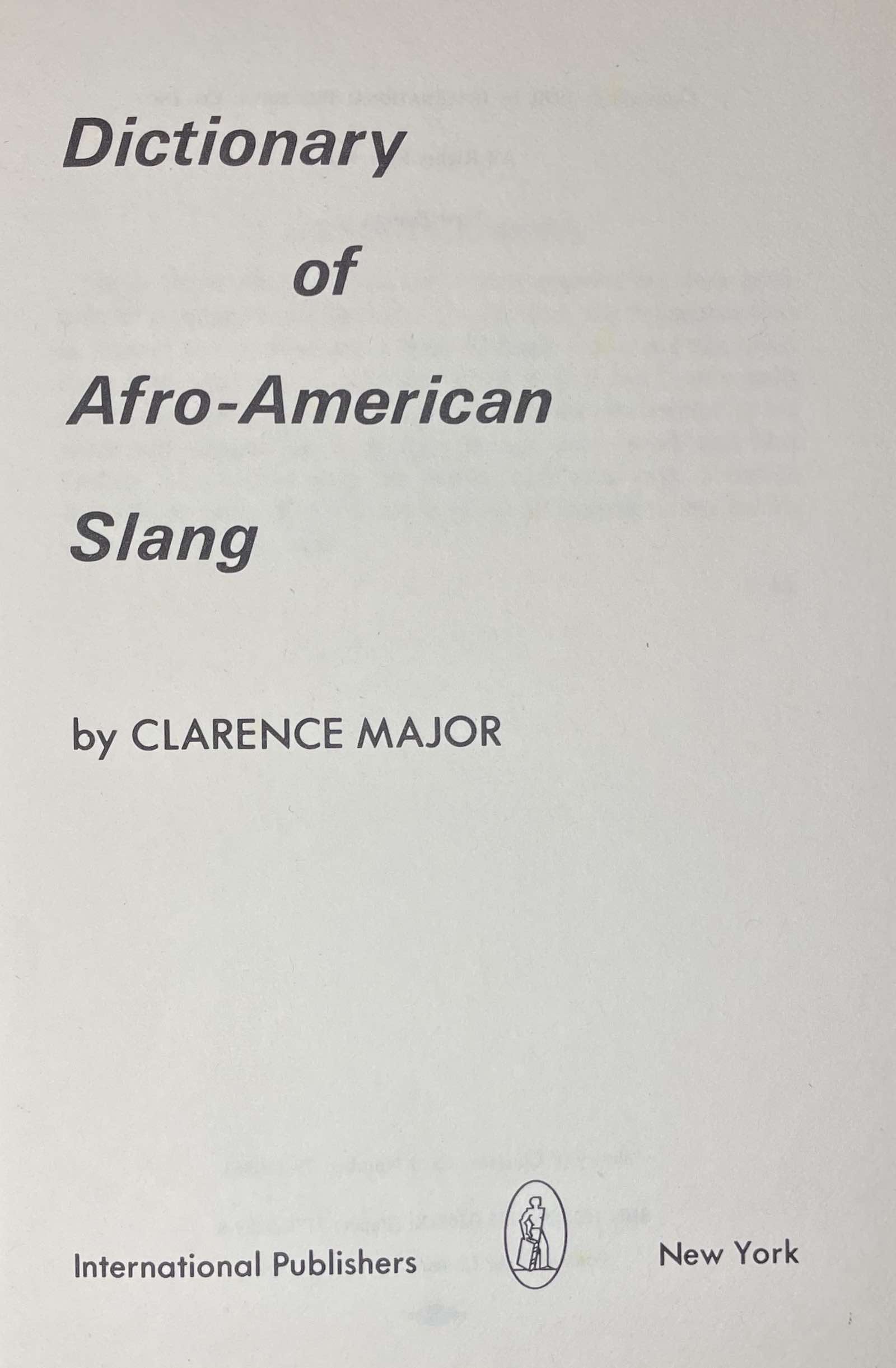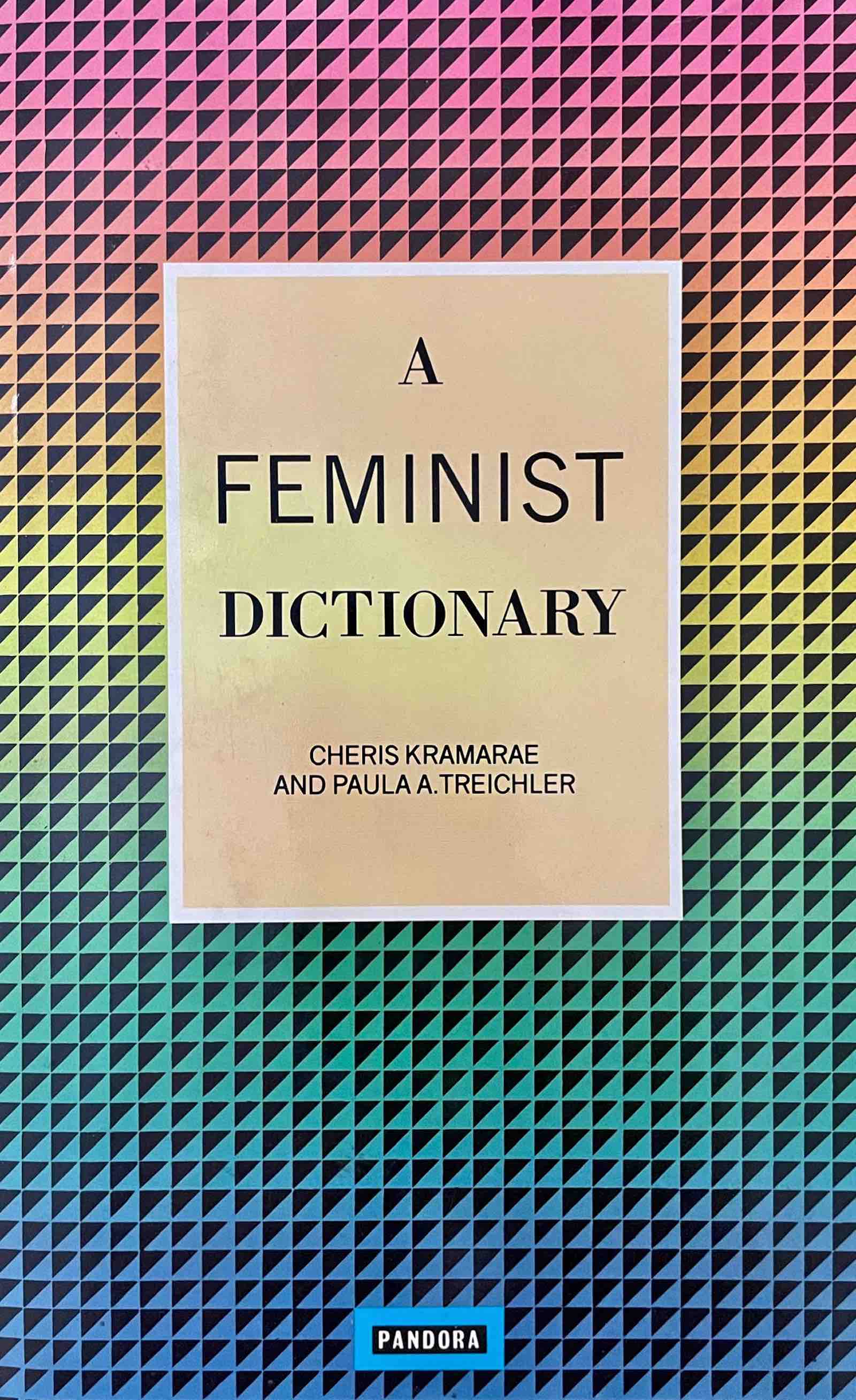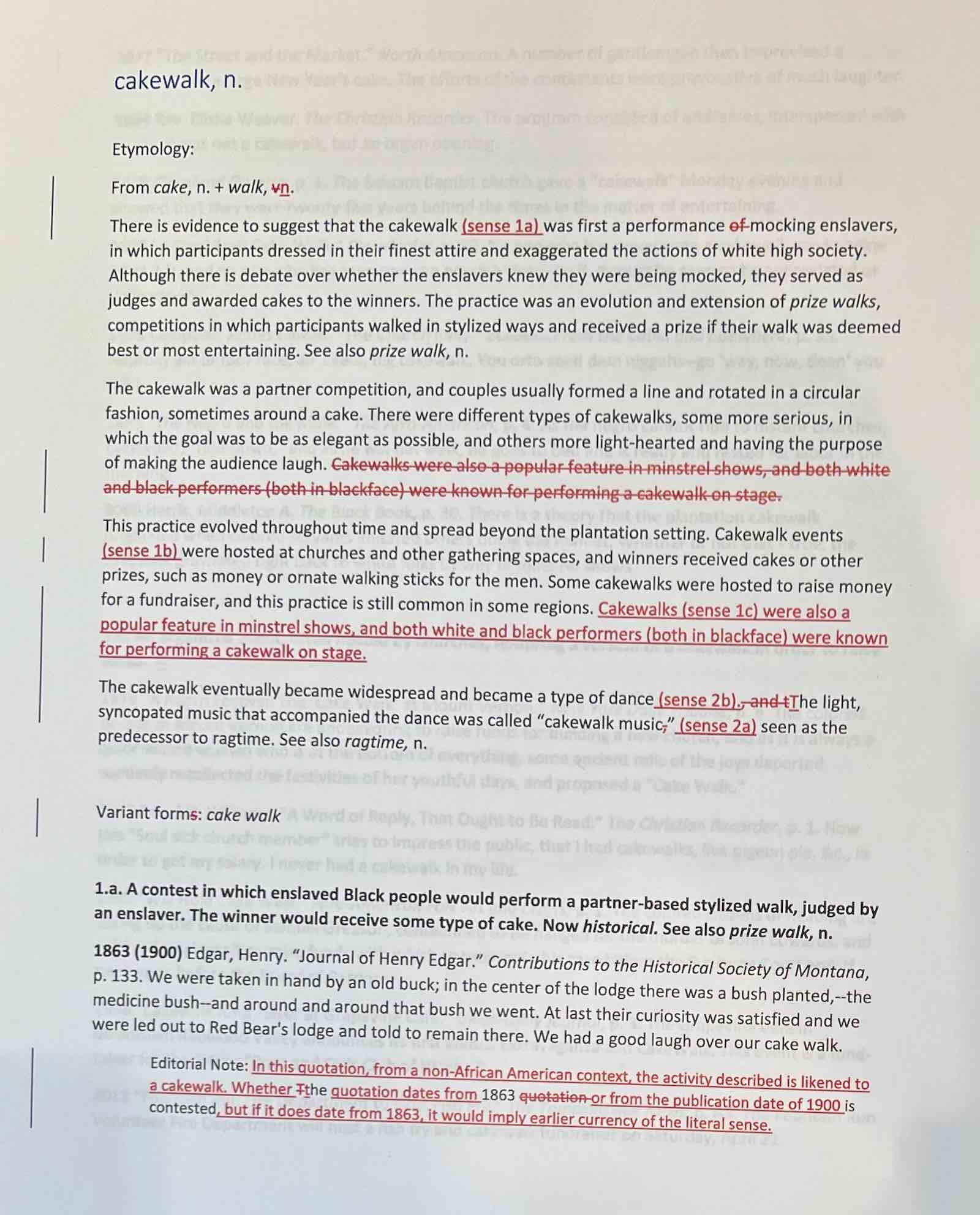Highlights include:
* a 15th-century German dictionary leaf with civil-law entries relating to abortion and two law dictionaries printed in 1474, one of which, Vocabularius Juris Utriusque Iuris, is attributed to Jodocus of Erfurt, Germany, and went through more than 70 printed editions over the following 150 years
* John Minsheu’s A Dictionarie in Spanish and English (London: Edm. Bollifant, 1599), a bilingual dictionary made with the help of prisoners of war from the Spanish Armada
* a first edition of Samuel Johnson’s monumental two-volume Dictionary of the English Language (London: Printed by W. Strahan for J. & P. Knapton et al., 1755) which marked a new epoch in lexicography with 43,000 headwords supported by 115,000 quotations from great writers
Johnson’s work was the dictionary until Noah Webster and the Oxford English Dictionary came on the scene in the 19th century. Webster's first lexicographic work, A Compendious Dictionary of the English Language (New Haven: Sidney’s Press, 1806), featured 40,000 definitions and championed American spellings. When Joseph Worcester was hired to abridge Webster’s monumental American Dictionary (New York: Sherman Converse, 1828) and then went on to write his own, Webster accused him of plagiarism and began a 'dictionary war' that lasted three decades. On view in the exhibition is Webster’s own copy of what must have been an infuriating document, a copyright jointly held with his nemesis, Worcester.
Also on display is the first English dictionary by a woman, Ann Fisher’s An Accurate New Spelling Dictionary, and Expositor of the English Language (London: Printed for the author and sold by Hawes et al., 1773. 2d ed.), of which no first editions are known to exist. This is apparently the only extant copy of the second edition. The exhibition will also feature an early copy of Peter Mark Roget’s Thesaurus of English Words and Phrases (London: Longman, Brown et al., 1852) inscribed to his son, who later became editor of the Thesaurus, as well as letters to lexicographers from Charles Dickens, J.R.R. Tolkien, Mark Twain, and E.B. White.
Lexicographic efforts in the 20th and 21st centuries will also be on show, including:
- the first dictionary of Black English, Clarence Major’s Dictionary of Afro-American Slang (New York: International Pubs., 1970)
- the first LGBT dictionary, Bruce Rodgers’ The Queens’ Vernacular: A Gay Lexicon (San Francisco: Straight Arrow Books, 1972)
- A Feminist Dictionary by Cheris Kramarae and Paula Treichler, with Ann Russo (Boston: Pandora Press, 1985), which questioned the ideology behind ostensibly neutral and objective reference books, said to be “constructed almost entirely by men with male readers and users in mind.”
- a preview of draft entries to be included in Henry Louis Gates Jr.’s forthcoming Dictionary of African American English (Oxford: Oxford Univ. Press, projected for 2025)
An accompanying book details how the dictionary evolved from manuscript to print to digital editions.
The Grolier Club will host related free public programs including lunchtime exhibition tours on June 5, June 13, and June 20. Evening lectures include Kory Stamper on Young Ladies Who Chuse To Learn The English Grammar’: The Extraordinary Life and Work of Ann Fisher on May 20; Bryan Garner on Why I Collect Books on June 5; Peter Sokolowski on Englishing the World: Calepino to Elyot to Cawdrey on June 12; Jack Lynch on The Frontiers of Anglicity: What’s In, What's Out? on June 17; and Lynda Mugglestone on Samuel Johnson’s Garret Lexicography on June 26.

